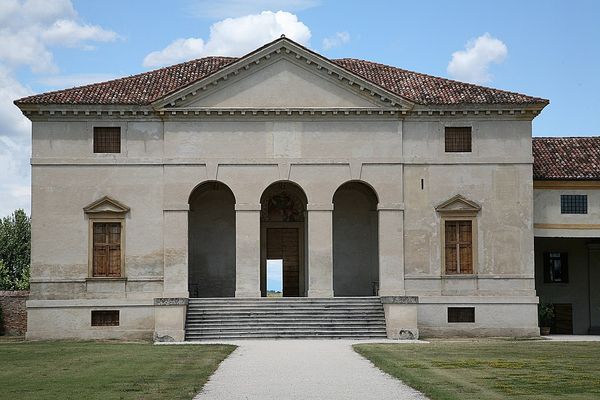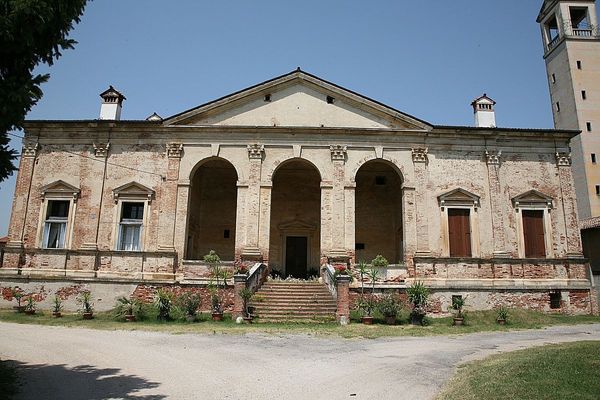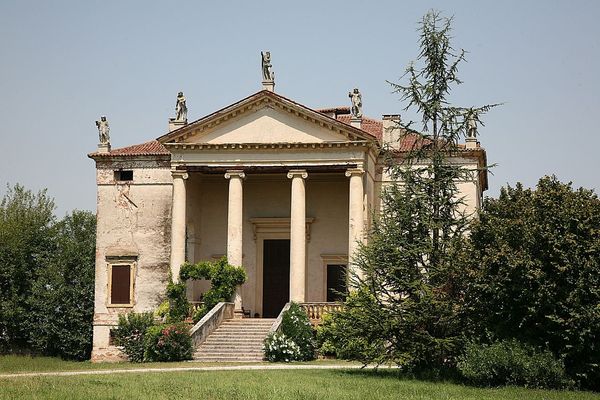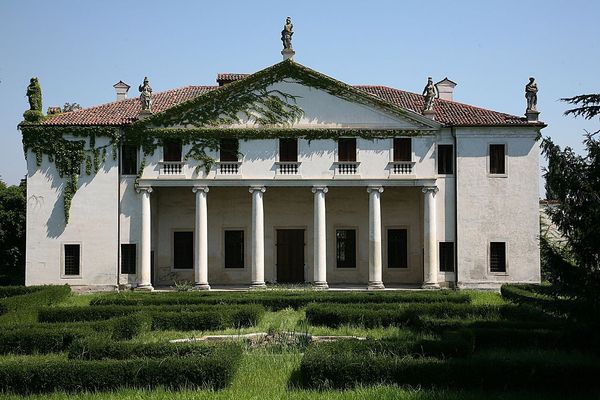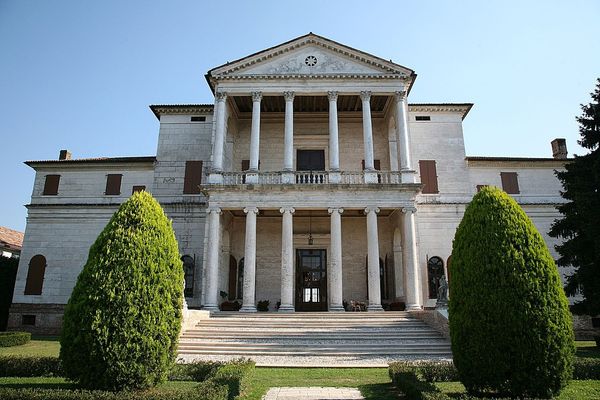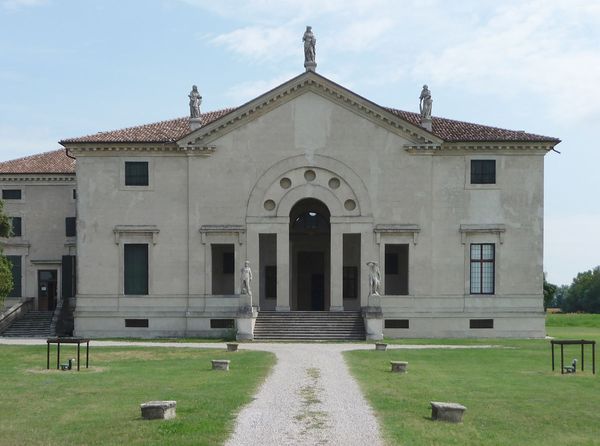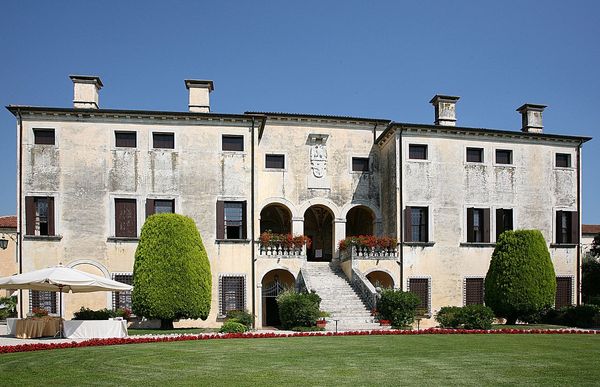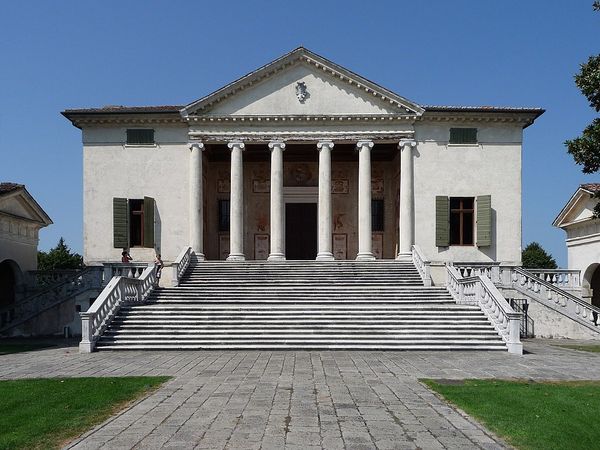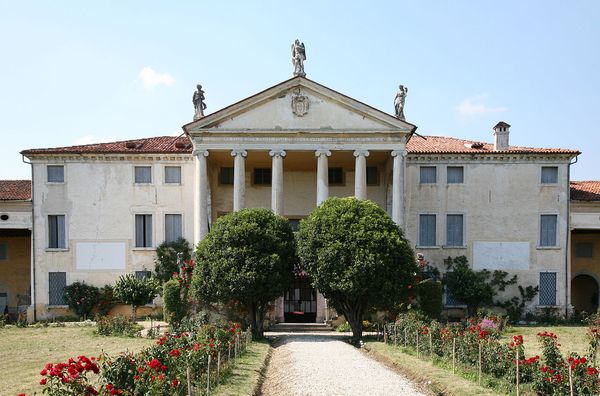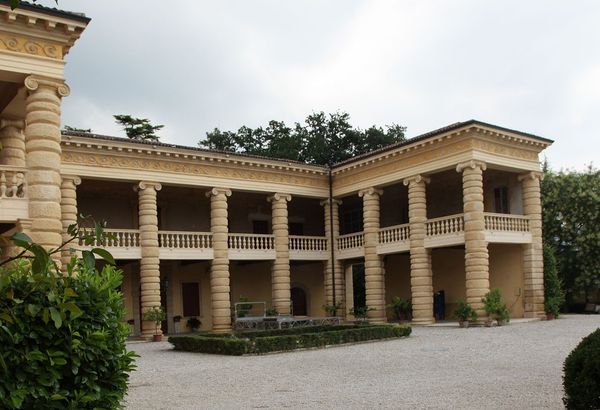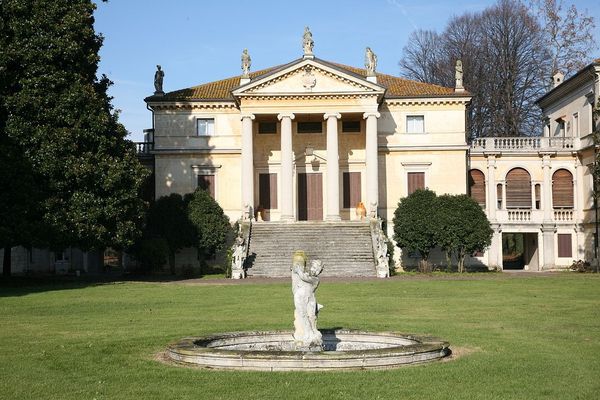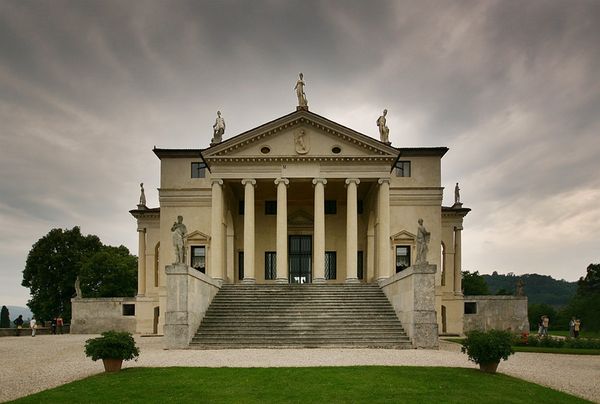
architecture
#
landscape
#
architecture
#
italian-renaissance
#
architecture
Copyright: Public domain
Curator: Here we have Villa Foscari, an architectural work completed around 1560 by the celebrated Andrea Palladio. Editor: It has such a strong sense of monumentality, doesn’t it? Even in a static image, those columns really command the space and the muted colors are very imposing. Curator: Palladio built these villas for the Venetian elite as ways to manage their farmlands; thus the Villa served the dual role of habitation and site for agricultural production. They're statements of power meant to exert control over labor and land. Editor: I'm drawn to how the classical elements—the pediment, the symmetrical façade, those grand columns—are arranged. It looks like the strict proportions almost border on being cold but also bring a level of serene balance. The cylindrical chimneys also create this striking verticality. Curator: Palladio was, of course, deeply influenced by the classical architecture of ancient Rome and sought to revive those principles in his designs. This interest grew within a social milieu looking for models of patrician governance. His work offered a visual ideology as Venice became ever more a mercantile power. Editor: It's so fascinating how the rigid symmetry provides this overwhelming stability and calm. Everything seems to converge towards the center point, amplifying its imposing, permanent nature, yet softened by a touch of green. Curator: These villas weren't merely aesthetic statements but nodes within vast networks of land and capital. It represented the patron’s status in Venice's socio-economic fabric. These buildings are literally built on the labor of farmers! Editor: Analyzing its elements through the lens of design brings a richer appreciation to its formal impact, that strong contrast of shadow under the portico and pure geometrical composition. Curator: And understanding that impact is only further enriched when considered within the historical context in which it emerged. What may appear to be a quaint vacation home is in fact an assertion of dominance! Editor: Absolutely, these additional layers, cultural context, make understanding the intention of Palladio's work, and even more his decisions about line and form.
Comments
No comments
Be the first to comment and join the conversation on the ultimate creative platform.
